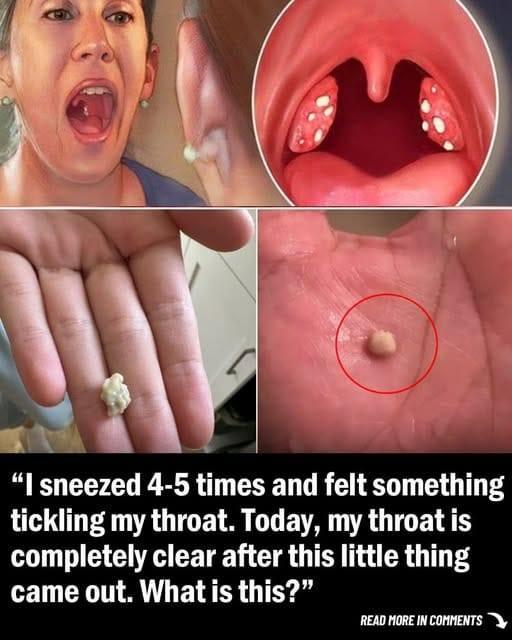Tonsil stones, also known as tonsilloliths, may sound like something out of a medical mystery book, but they’re surprisingly common and not as alarming as they seem. If you’ve ever felt an odd sensation in the back of your throat or experienced persistent bad breath without explanation, it might be time to consider this often-overlooked culprit.

Tonsil stones aren’t dangerous or life-threatening, but they can certainly be annoying and a little gross to think about. The human body is full of fascinating quirks, and tonsil stones are just one more strange but harmless occurrence. With the explosion of viral content on platforms like TikTok and YouTube, we’re seeing more attention being given to things people never used to talk about openly—like cyst removals, earwax extractions, and yes, tonsil stones. These videos, while hard to watch for some, offer an inside look at things our bodies do that we might otherwise never see. I had no idea what tonsil stones were until I stumbled upon one of those viral clips showing someone removing them from their throat. It was oddly captivating, and a little uncomfortable, but it made me want to learn more.
Tonsil stones are small, hard deposits that form in the tonsils, those two soft tissue masses located at the back of your throat. These stones can appear white or yellow and are usually made up of debris such as food particles, dead cells, bacteria, and mucus that get caught in the nooks and crannies of the tonsils, known as tonsillar crypts. Over time, the trapped material calcifies, resulting in a hardened stone-like substance. According to medical sources like the Mayo Clinic, while these formations are not typically harmful or painful, they can lead to some unpleasant side effects. One of the most common and frustrating symptoms is chronic bad breath. The decaying material within the stones can emit a foul odor, which can be embarrassing and difficult to mask with typical breath fresheners.
Other symptoms might include a sore throat, a feeling of something being stuck in the back of the mouth, difficulty swallowing, and even ear pain due to shared nerve pathways. Some people also report coughing fits that occur when the stones dislodge. You might not always know if you have tonsil stones. In many cases, they are small and cause no symptoms at all. Sometimes they’re discovered incidentally during a dental check-up or a doctor’s visit. Larger stones, however, can be seen with the naked eye or felt in the back of your throat. If you think you have tonsil stones, the good news is that they can often be removed at home. Gentle pressure with a cotton swab or the back of a toothbrush can help dislodge them. Some people even use water flossers to flush them out.
However, care must be taken not to damage the delicate tonsil tissue or cause bleeding. For those dealing with recurrent or particularly stubborn tonsil stones, a healthcare provider might suggest more advanced treatments. These can include laser cryptolysis, which smooths out the tonsillar surface to prevent debris from collecting, or even a tonsillectomy in severe cases. Prevention, as always, is the best strategy. Practicing good oral hygiene is key to avoiding tonsil stones. This includes brushing your teeth and tongue regularly, flossing daily, and using mouthwash to reduce bacteria in your mouth. Staying hydrated also helps by keeping the mouth moist and reducing the accumulation of debris. For people who are prone to post-nasal drip or chronic sinus infections, treating those underlying issues can also help minimize the chances of tonsil stone formation. While tonsil stones might seem like an uncomfortable topic, they’re a normal part of the human experience for many. If you’ve never had them, consider yourself lucky. If you have, know that you’re not alone—and that they’re usually nothing to worry about. With a bit of knowledge and proper care, tonsil stones can be managed or even avoided altogether.





